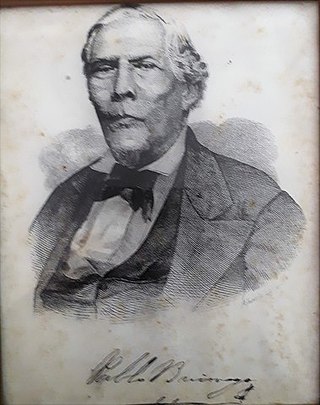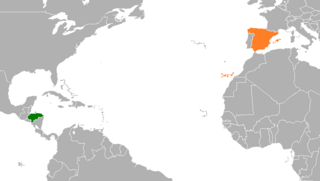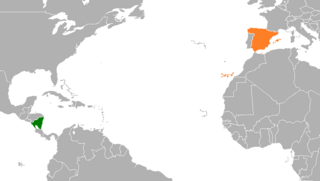
Central America is a subregion of the Americas. Its political boundaries are defined as bordering Mexico to the north, Colombia to the south, the Caribbean Sea to the east, and the Pacific Ocean to the west. Central America usually consists of seven countries: Belize, Costa Rica, El Salvador, Guatemala, Honduras, Nicaragua, and Panama. Within Central America is the Mesoamerican biodiversity hotspot, which extends from northern Guatemala to central Panama. Due to the presence of several active geologic faults and the Central America Volcanic Arc, there is a high amount of seismic activity in the region, such as volcanic eruptions and earthquakes which has resulted in death, injury, and property damage.

Central America is commonly said to include Guatemala, Belize, El Salvador, Honduras, Nicaragua, Costa Rica, and Panama. This definition matches modern political borders. Central America begins geographically in Mexico, at the Isthmus of Tehuantepec, Mexico's narrowest point, and the former country of Yucatán (1841–1848) was part of Central America. At the other end, before its independence in 1903 Panama was part of South America, as it was a Department of Colombia. At times Belize, a British colony until 1981, where English instead of Spanish is spoken, and where the population is primarily of African origin, has been considered not part of (Spanish-speaking) Central America.

The Federal Republic of Central America was a sovereign state in Central America which existed from 1823 to 1841. Originally known as the United Provinces of Central America, the democratic republic was composed of the territories of the former Captaincy General of Guatemala of New Spain.

The Greater Republic of Central America, later the United States of Central America, originally planned to be known as the Republic of Central America, was a short-lived political union between El Salvador, Honduras, and Nicaragua, lasting from 1896 to 1898. It was an attempt to revive the failed Federal Republic of Central America that existed earlier in the century.

Carlos Basilio Ezeta y León was President of El Salvador from 22 June 1890 to 9 June 1894, when he was overthrown in the Revolution of the 44. He was a military ruler. He died on 21 March 1903, aged 50.

Rafael Antonio Gutiérrez was the president of El Salvador from 10 June 1894 to 13 November 1898. He was a leader of the Revolution of the 44 which overthrew President General Carlos Ezeta from April to June 1894. Gutiérrez served as provisional president until being officially inaugurated in March 1895 after his victory in the 1895 presidential election, in which he was the only candidate.

The Central American Integration System has been the economic and political organization of Central American states since 1 February 1993. On 13 December 1991, the ODECA countries signed the Protocol of Tegucigalpa, extending earlier cooperation for regional peace, political freedom, democracy and economic development. SICA's General Secretariat is in El Salvador.

Pablo Sánchez de Buitrago Sandoval y Benavente was a legitimist Nicaraguan politician who served as the 2nd Supreme Director of Nicaragua from 4 March 1841 to 1 April 1843. He was the first non-acting, elected Supreme Director.

This is an index of Central America-related articles. This index defines Central America as the seven nations of Belize, Costa Rica, El Salvador, Guatemala, Honduras, Nicaragua, and Panama.

El Salvador–Mexico relations are the diplomatic relations between El Salvador and Mexico. Both nations are members of the Association of Caribbean States, Community of Latin American and Caribbean States, Organization of American States, Organization of Ibero-American States and the United Nations.

Honduras–Mexico relations are the diplomatic relations between Honduras and Mexico. Both nations are members of the Association of Caribbean States, Community of Latin American and Caribbean States, Organization of American States, Organization of Ibero-American States and the United Nations.

El Salvador–Spain relations are the current and historical relations between El Salvador and Spain. Both nations are members of the Association of Academies of the Spanish Language, Organization of Ibero-American States and the United Nations.

Honduras–Spain relations are the diplomatic relations between Honduras and Spain. Both nations are members of the Association of Academies of the Spanish Language and the Organization of Ibero-American States.

Nicaragua–Spain relations are the diplomatic relations between Nicaragua and Spain. Both nations are members of the Association of Academies of the Spanish Language and the Organization of Ibero-American States.
The Constitution of the Greater Republic of Central America, officially the Constitution of the United States of Central America, was the supreme law of the United States of Central America in late 1898.

The Totoposte Wars were three military conflicts fought in Central America between 1890 and 1906. The First Totoposte War occurred during the presidency of Manuel Lisandro Barillas Bercián in Guatemala, after the overthrow of Salvadoran President Francisco Menéndez by General Carlos Ezeta in El Salvador, which caused the exile of many Salvadorans who took refuge in Guatemala and who requested the help of President Barillas Bercián to stop the armies of Ezeta. The Second Totoposte War arose after the opposition of Guatemalan President Manuel Estrada Cabrera to the integration of Guatemala with the Greater Republic of Central America since Estrada Cabrera was more inclined to work with the government of the United States. The Third Totoposte War occurred in 1906 in similar conditions. In all three wars, the Guatemalan people mockingly referred to the war as the "Totoposte War" because it only served to consume large amounts of this corn-based food, without actually fighting.
The War of 1907 was a conflict fought between El Salvador and an alliance between Honduras, Nicaragua, Salvadoran exiles, and American filibusters. The invasion of El Salvador on 11 June 1907 resulted in a quick military victory for El Salvador as invading forces withdrew by the end of the day. The war officially ended with the signing of a peace treaty on 20 December 1907 which established the Central American Court of Justice.
Relations between the Federal Republic of Central America, also known as the Central American Federation, and the United States were formally established in 1824 following the Federation's independence from Spain. Relations lasted until 1841 when the Federation dissolved and relations with the United States continued among the newly independent former member states of Costa Rica, El Salvador, Guatemala, Honduras, and Nicaragua.














